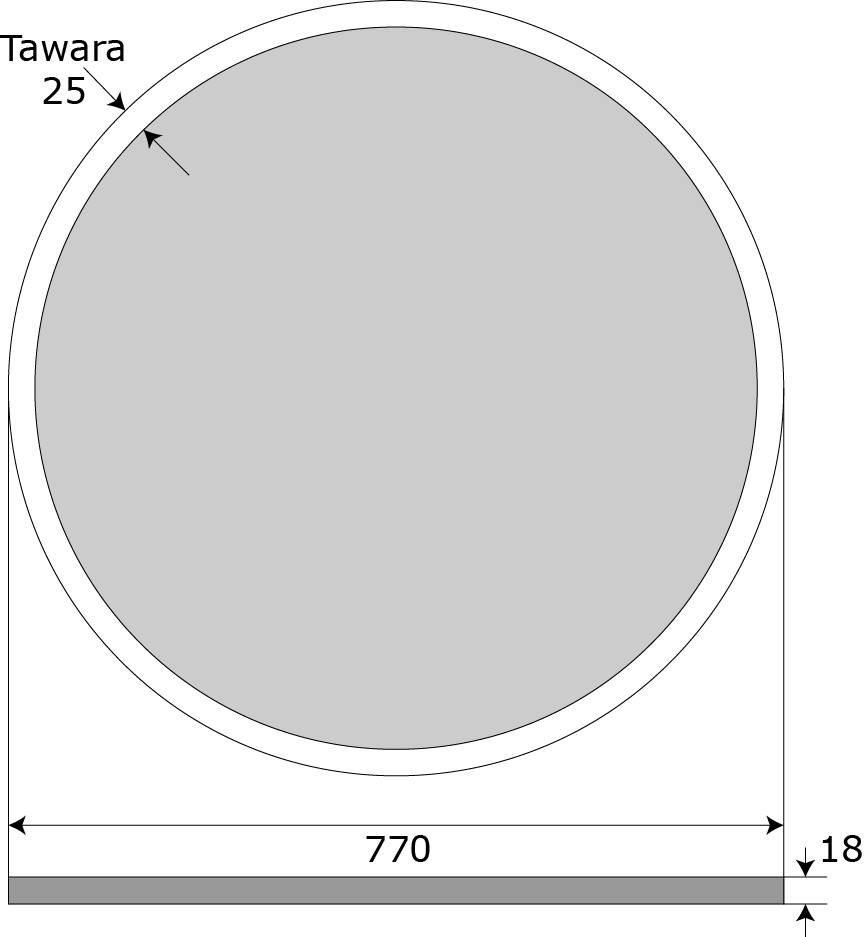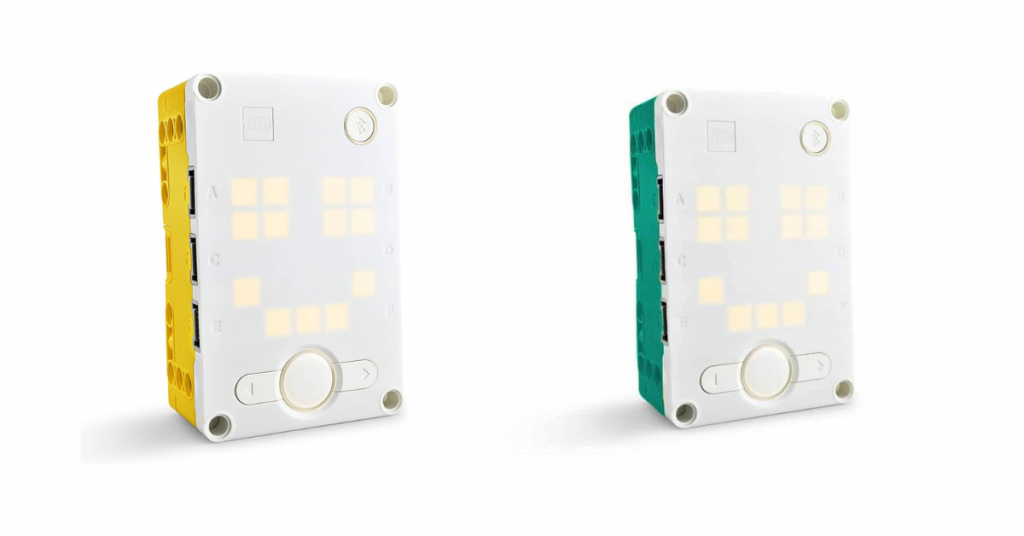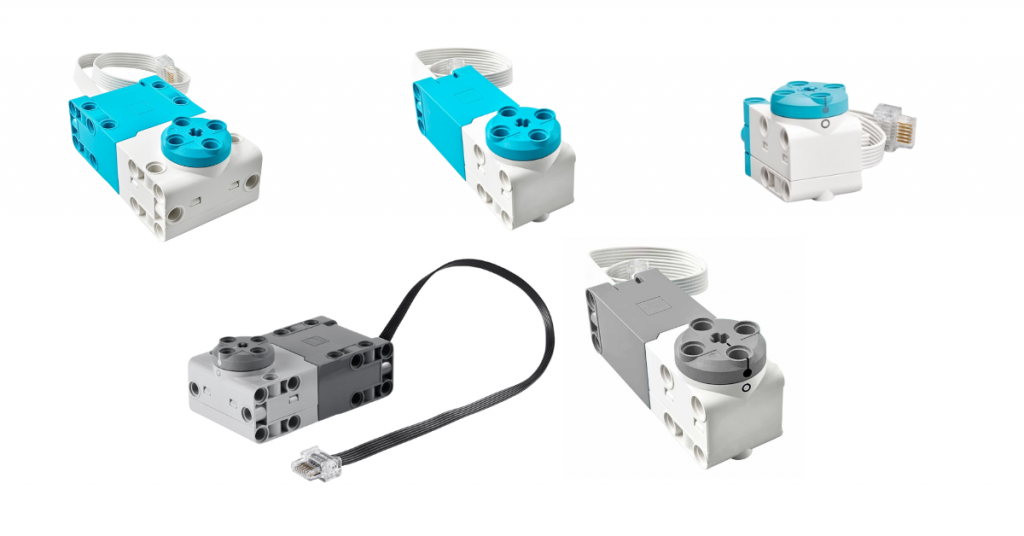1.Definition
การแข่งขันระหว่างสองทีมแต่ละทีมมีผู้เข้าแข่งขัน 1 หรือ 2 คน ผู้เข้าแข่งขันทำการแข่งขันกันบน Dohyo (วงแหวนซูโม่) ด้วยหุ่นยนต์ที่ผู้เข้าแข่งขันได้สร้างมาก่อนการแข่งขันด้วยตนเอง การแข่งขันเริ่มต้นตามคำสั่งของผู้ตัดสิน และทำการแข่งขันต่อเนื่องจนกว่ามีทีมที่ได้รับคะแนน Yuhkoh (ยูโค) 2 คะแนนก่อนจะเป็นฝ่ายชนะใน Match นั้นๆ
2.Contestant
2.1 ทีมหุ่นยนต์ประกอบด้วยสมากชิก 1 หรือ 2 คน (ไม่นับรวมผู้ควบคุมทีม)
2.2 Age categories
- 2.2.1 Junior All Spike Age 5 - 13 (All Spike)
- 2.2.2 รุ่น Senior All Lego อายุตั้งแต่ 14 ปี ขึ้นไป แต่ไม่เกิน 19 ปี (All Lego)
- 2.2.3 รุ่น Open อายุตั้งแต่ 5 ปีขึ้นไป (All Lego)
2.3 Each competitor can compete in only one team per division.
2.4 the team will have mentor or not
3. Sumo Ring

รูปที่ 1 สนามแข่งขัน
3.1 The dohyo interior is defined as the playing surface surrounded by and including the border line. Anywhere outside this area is called the dohyo exterior.
3.2 The Sumo ring shall be circular in shape and of the appropriate dimensions for the given size class. Material: Wood Diameter: 770 mm. Hight: Above ground 18 mm.
3.3 The border line is marked as a white circular ring of a width with 25 mm. appropriate for the given class on the outer edge of the playing surface. The area inside white circular ring is black.
3.4 There should be a space appropriate for the given class outside the outer edge of the ring. This space can be of any color, and can be of any material or shape as long as the basic concepts of these rules are not violated
4.Requirement for Robot
4.1 A robot must width and length 15 cm. x 15 cm. unlimited for the height and must fir with the provided box 15 cm x 15 cm. The total mass must not over 1000 gram including battery and all equipment (excluding program loading cable and computer)
4.2 หุ่นยนต์จะต้องสร้างหรือประกอบจากขึ้นชิ้นส่วน LEGO หรือชิ้นส่วนเทียบ LEGO ได้ทั้งสิ้น
4.3 The main controller is not limited in quantity and is not restricted in its source of purchase. Each model must adhere to the following specifications
- 4.3.1 รุ่น Junior All Spike อนุญาตให้ใช้คอนโทลเลอร์ SpikePrime และ Mindstrom Robot Inventor ดังรูปที่ 3 เท่านั้น ไม่จำกัดจำนวนโดยจะต้องโปรแกรมในช่องโปรแกรมหมายเลข 0 เท่านั้น

Figure 3 Controller allow for Jujior All spike
- 4.3.2 รุ่น Senior All Lego และ Open ไม่จำกัดชนิดและจำนวนของคอนโทลเลอร์ที่นำมาใช้ในการสร้างหุ่นยนต์ โดยจะมีโปรแกรมในคอนโทลเลอร์ได้เพียง โปรแกรมเดียวเท่านั้น
4.4 Motors
- 4.4.1 รุ่น Junior All Spike กำหนดให้ใช้มอเตอร์ในการสร้างได้ไม่จำกัดจำนวน โดยกำหนดให้ใช้มอเตอร์รุ่นดังรูปที่ 4 เท่านั้น และห้ามทำการตัดต่อหรือดัดแปลงสายไฟ
2025 add Lego Technic Large Motor Code 88013

รูปที่ 4 มอเตอร์สำหรับการแข่งขันรุ่น Junior
- 4.4.2 รุ่น Senior All Lego และOpen ไม่จำกัดจำนวนและชนิดของมอเตอร์ที่ใช้ในการสร้างแต่จะต้องเป็นมอเตอร์ในกลุ่มของ Lego เท่านั้น และห้ามทำการตัดต่อหรือดัดแปลงสายไฟ
4.5 Wheel and Tire
- 4.5.1 รุ่น Junior All Spike อนุญาตให้ใช้ล้อและยางที่เป็นล้อขับเคลื่อนได้ไม่จำกัดจำนวน โดยให้ใช้ได้ตามรูปที่ 5 เท่านั้น และไม่มีการดัดแปลงไปจากการใช้งานปกติ
2025 Add Lego Wheel Spike Essential 65834

Fig. 5
- 4.5.2 รุ่น Senior All Lego และOpen ไม่จำกัดจำนวนล้อและยางที่เป็นล้อขับเคลื่อน และไม่จำกัดชนิดแต่จะต้องเป็นล้อของ Lego และไม่มีการดัดแปลงไปจากการใช้งานปกติ
4.6 Battery AA and Rechargable Battery allowed
4.7 The robot can expand its size during the competition after the referee signals the start of the match, at least 5 seconds into the match. However, there should be no shooting, throwing, or releasing of any parts or equipment from the robot during the competition. Otherwise, the team will be disqualified immediately in that match.
4.8 Fastening of screws and nuts or other fixing devices in the robot must act firmly. If during the match, any piece falls off, breaks, or onto the field, the judge will remove it and allow the competition to continue. The judge cannot be held liable for the consequences incurred during the removal of a piece that has fallen out of bounds.
4.9 Can use any standard part color from LEGO
4.10 หนังยางและเชือกทุกรูปแบบอนุโลมให้ใช้เพื่อการเก็บสายไฟได้เท่านั้น ห้ามส่งผลต่อการทำงานเชิงกลหรือส่งผลต่อการทำงานอื่นทั้งต่อหุ่นยนต์ตนเองและคู่ต่อสู้
5. Prohibits for creating a robot.
5.1 Must not do anything which interferes the performance of competitor's detectors, such as transmitting infrared light to interfere of the competitor's infrared modules or installing parts that are white or tinted or reflective paint that causes competitor’s detectors to malfunction.
5.2 No components or equipment may be used. As soon as worn, it can harm sumo rings. Including the wheels that have been coated or impregnated with oil or another lubricant.
5.3 Must not install or use equipment containing liquids. Flour or dust, including air, can be sent to a competitor's robot by any means.
5.4 It must not use any equipment when operating normally, could generate a flame or burning
5.5 It must not use any device that can shoot, throw, or send parts from the robot to an opponent.
Prohibition on installing or using any devices and tools that can attach the robot to the arena floor and the sumo ring, including but not limited to glue, adhesive rubber, tape, stickers, and special equipment used to support or create resistance against the arena floor, such as a Jet system
5.7 If cleaning the wheels or tires either before the match or during the match could cause adhesion to the field due to glue or cleaning solution, a test will be conducted. The test involves placing the robot on a half A4 sheet of paper and lifting it. The robot must not stick to the paper for more than 0.5 seconds. The test will be conducted upon the request of the competing team and will be overseen by the test referee.
6. Competition
6.1 In each match of the competition, there are 3 rounds, and each round lasts no more than 2 minutes.
6.2 The winner of the competition is the team with the best score in 3 rounds, such as winning 2 out of 3 rounds. Each win in a round earns the team 1 Yuhkoh. If no team scores before the end of the time limit, the round is considered a draw. If all 3 rounds are completed and no team has scored 2 Yuhkoh, the judges will make the following decisions
If both teams get 1 Yuhkoh (each round win) and there is a tie for 1 round, the lighter-weight team wins
If all 3 rounds are tied, the team with the lighter-weight wins.
If there is a tie in 2 rounds and either team wins the remaining rounds, the match is considered the winner.
If after the first 2 rounds of the competition, no team has won or scored 2 Yuhkoh, a third round must be played. For example, if in the first round Team A wins, in the second round they draw, a third round must be played. If in the third round Team B wins, the decision will be determined by weighing. The team with the lighter weight will be declared the winner, except in the championship round, where a special overtime round must be played
6.3 The competition system will be a double elimination. Lose teams twice will be eliminated. The winning team advances to the next round. And compete in a knock-out style continuously until get the winning team, 1st runner-up, 2nd runner-up, and 3rd runner-up.
7. Start, Resume, End a Match
7.1 The competitors on the field must meet when the judge’s signals.
7.2 The judges will throw boundary markers onto the competition arena. The boundary markers will divide the arena into 4 sections. The robots will be placed opposite each other in the designated areas, and a specific part of the robot must touch the white boundary line, as shown in the example image

Picture Simpale of Place robot
7.3 In the first round, teams must take a gamble. The team that loses in the gamble must place their robot on the arena floor according to the specifications in section 7.2. The robot can be oriented in any direction towards the opposing side. Then, the winning team in the gamble places their robot on the arena floor behind the other team's robot. Once the robots are placed, they must not be moved.
7.4 To start the competition, the referee will signal the start. Once the referee gives the signal, each team must press the start button only once. The robot must remain still for at least 5 seconds after the referee's signal.
7.5 Starting from the second round onwards, the team that won the previous round will be the one to place their robot on the arena floor behind the Chikiri line first. The robot can be oriented in any direction towards the opposing side. The team that lost in the previous round will then place their robot on the arena floor behind
7.6 The competition may be paused and restarted only when announced by the judges.
7.7 The competition officially concludes when the head judge announces that competitors should remove their robots from the arena
8. Yuhkoh Point
8.1 One Yuhkoh point shall be given when:
- 8.1.1 The opposing robot has touched the space outside the ring by any component.
- 8.1.2 If any part of the opposing robot makes contact with the floor outside the Sumo ring on its own, the opposing team will score 1 Yuhkoh. If the opposing team does not move or does not complete its actions, and the referee counts less than 5, it will be considered as the fallen team, and the opposing team will score points accordingly.
- 8.1.3 If one team's robot is not functioning or does not show progress in movement for 5 seconds, the referee will count to 5, and the inactive team will lose 1 Yuhkoh.
- 8.1.4 If the robot moves within 5 seconds after the referee signals twice, the opposing team will score 1 Yuhkoh.
8.2 If the robot is still on the ring line, not yet considered scored, let's continue to compete.
8.3 The match shall be stopped under the following conditions:
- 8.3.1 If both robots hug or attach to each other without any movement for 5 seconds, the referee will count to 5.
- 8.3.2 If both robots move in a repetitive pattern, such as forward-backward movement, rotating continuously, or moving in a circular motion for a continuous 5 seconds, and if they remain stationary, it is considered an event of no progress in movement. However, the referee has the option to extend the time in this case to 30 seconds. The referee will stop the time, both teams will place their robots back in the same sequence, and the referee will signal for a new start. The robots will resume their actions as if it were the initial start, and the time will continue .
- 8.3.3 In the event that one team experiences an occurrence from the previous rule, the other team will be awarded 1 Yuhkoh. However, the judges have the authority to extend the time to 30 seconds in this situation.
- 8.3.4 If both robots come into contact with the ground outside the sumo ring. By not identified which first,. The judge will decide to restart the competition.
9. Foul Out
9.1 Competitors acting insultingly insult the opponent, whether by word or action, or have the robot make sounds, display messages, or perform insulting gestures. Insulting an opponent will result in a forfeit penalty.
9.2 Enter the ring area during the race. except in the case of entering to remove the robot when the Chief Judge announces the Yuhkoh score or during a stoppage of the game.
9.3 Throw or take any parts or equipment into the ring area
9.4 Competitor in violation of rules 2, 4 and 5.
10. Punishment
10.1 Competitors who violate the rules and provisions in sections 9.1, 9.2, 9.3, and 9.4 will be immediately declared losers and 2 Yuhkoh will be awarded to the opposing team. The offender has no right to appeal
10.2 If the team mentor is involved in any misconduct, all teams under their supervision will be disqualified from the competition
11. Injuries and Accidents during the Match
11.1 A player can request to stop the game when he/she is injured or his/her robot had an accident and the game cannot continue.
11.2 When the game cannot continue due to player's injury or robot's accident, the player who is the cause of such injury or accident loses the match. When it is not clear which team is such a cause, the player who cannot continue the game, or who requests to stop the game, shall be declared as the loser.
11.3 Whether the game should continue in case of injury or accident shall be decided by the judges and the Committee members. The decision process shall take no longer than five minutes.
11.4 If a team is unable to continue the competition due to an incident in section 11.2, and the team is not the cause of the accident, they will receive 2 Yuhkoh, leading them to victory in the competition. If they already have 1 Yuhkoh, an additional 1 Yuhkoh will be awarded to make them the winner
Award
Prize
1st winner (one team) receives a trophy
Competency certificate.
สิทธ์ในการเข้าร่วมการแข่งขันหุ่นยนต์ในระดับนานาชาติ
2. first runner-up (one team) receives a trophy
Competency certificate.
สิทธ์ในการเข้าร่วมการแข่งขันหุ่นยนต์ในระดับนานาชาติ
3.second runner-up (one team) receives a trophy
Competency certificate.
สิทธ์ในการเข้าร่วมการแข่งขันหุ่นยนต์ในระดับนานาชาติ
4. third runner-up (one team) receives a trophy
Competency certificate.
สิทธ์ในการเข้าร่วมการแข่งขันหุ่นยนต์ในระดับนานาชาติ
5.fourth runner-up (four team) receives a trophy.
Competency certificate.
สิทธ์ในการเข้าร่วมการแข่งขันหุ่นยนต์ในระดับนานาชาติ
-----
-----